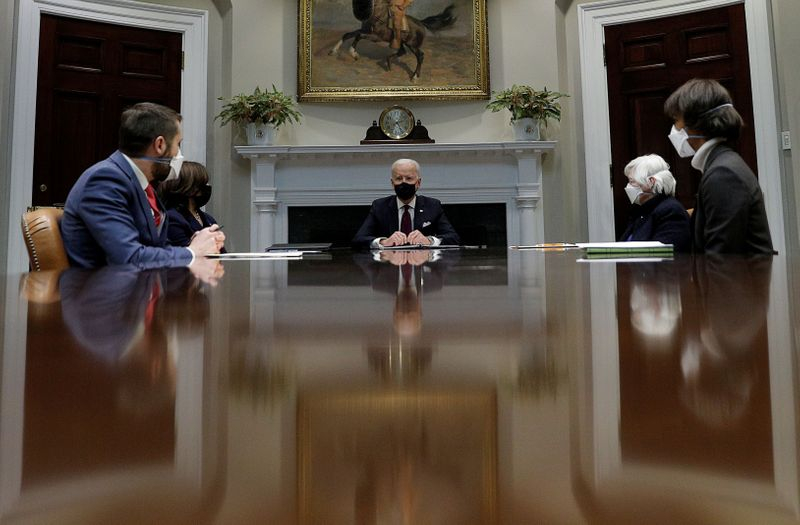Why this Fed won’t bat an eyelash at Biden’s spending blitz By Reuters

By Howard Schneider and Chris Canipe
WASHINGTON (Reuters) – The Biden administration and congressional Democrats are on the cusp of pumping another nearly $2 trillion into a U.S. economy just starting to show signs of life in the recovery from the COVID-19 pandemic.
For all the concern that such a huge stimulus will stoke inflation, there’s little chance that will prompt the Federal Reserve to pull back on the reins to prevent overheating, a maneuver that until recently had been hardwired into the U.S. central bank’s approach to managing the economy.
GRAPHIC: A flat “curve” – https://graphics.reuters.com/USA-ECONOMY/STIMULUS/xklpyoxjjpg/chart.png
How is this Fed different?
Last year under Chair Jerome Powell the central bank abandoned its old approach to setting monetary policy for a new one that emphasizes jobs and downplays the risks of inflation. Like President Joe Biden, its top priority is getting the millions of people unemployed during the pandemic back into jobs.
The Fed long considered inflation its primary concern. It looked to the unemployment rate for hints about when inflation would increase, relying on an economic relationship known as the Phillips Curve that showed how low unemployment coincided with higher inflation, and higher unemployment typically meant lower inflation.
For years after World War II, that connection held up. When unemployment was low, the Fed anticipated inflation would increase and slowed the economy to prevent that, pushing up unemployment as a result. In effect, joblessness among some people was used to control prices for everyone.
GRAPHIC: The Fed’s new focus – https://graphics.reuters.com/USA-ECONOMY/STIMULUS/gjnvwzqkypw/chart.png
The relationship began to break down in the 1970s – culminating with a period when both high unemployment and high inflation gripped the U.S. economy.
Paul Volcker, Fed chair from 1979 to 1987, famously tackled that dilemma and brought inflation to heel with ultra-high interest rates that caused some sharp recessions.
Following that, however, new forces like globalization and rapid advances in technology began holding down costs. Inflation became firmly anchored at much lower levels, and the unemployment rate ceased to be a reliable signal.
Nonetheless, the Fed still used the one to anticipate the other, opening it to criticism that it nipped off expansionary periods sooner than warranted, unnecessarily costing some workers their livelihoods.
Last August the Fed scrapped that old approach, saying it would no longer rely on the unemployment rate in gauging the risk of inflation, but would wait until prices actually rise.
That opens the door for sustained higher levels of employment, something the Fed and the Biden administration hope will translate into higher wages and better job security, particularly for minorities and others hit hardest by the recession.

